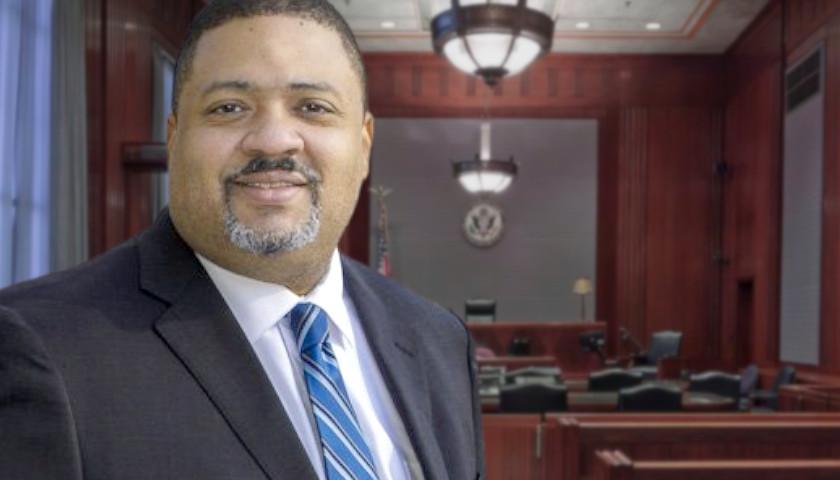A committee of GOP Pennsylvania lawmakers on Thursday gathered in downtown Lewisburg to consider ways to make patients aware of hospital service prices ahead of time.
At the House Republican Policy Committee hearing at the Open Discourse Coalition headquarters, policy experts testified that many hospitals still fail to accurately inform patients of procedures’ costs despite a new federal rule requiring price transparency. State Representative David Rowe (R-Middleburg), who organized the event, recalled constituents telling him they’ve faced shocking examples of pricing opacity.
One single mother, for instance, went onto a local hospital’s website to learn what an operation would cost her. Yet after returning home from the facility post-recovery, she received a bill totaling five times the published amount.
“She struggled to pay that,” Rowe said. “They turned her over to collections because of it. And that’s the sort of thing people should not be blindsided [by].”
He mentioned that just that morning, an area resident handed him a hospital bill with a payment requirement twice as large as the asking price and no explanation of the difference. The federal government has tried to end this practice, but to only modest avail.
In 2018, the Trump administration proposed that all American hospitals must offer a consumer-friendly display of list prices, cash-pay-discount prices, and lowest negotiated prices. The regulation took effect in early 2021 but, according to Americans for Prosperity (AFP) senior fellow Dean Clancy, only 14 percent of hospitals were initially in compliance; many care centers made a pretense of following the rule but effectively skirted it by publishing “estimated” prices. While the federal Centers for Medicare and Medicaid Services (CMS) states that 70 percent of hospitals adhere to the mandate, Clancy’s own observation suggests a roughly 25 percent compliance rate.
“It’s frustrating for people that they can’t see the prices,” he told legislators. “Healthcare’s unique really, in [that] it’s the only industry where you don’t normally see a good-faith price estimate up front before you get the service. You kind of have to buy the service to find out how much it costs.”
Clancy noted that the share of median U.S. family income devoted to medical care doubled from 13 percent to 26 percent since 2000. According to AFP survey data, 40 percent of Americans describe healthcare expenses as a “crisis,” and most voters name healthcare as one of their top three public-policy concerns.
Price transparency, he said, is a promising impetus to bring down these costs, but the American Hospital Association has resisted strong enforcement measures.
“Why are hospitals reluctant to comply?” he said. “Well, a list price is embarrassing because it’s an inflated price as a starting point for negotiation. And the actual price, the negotiated rate, that’s information they want to keep private because if it’s disclosed then that reduces their leverage in future negotiations; of course, that’s the whole point of the price-disclosure mandate.”
Theoretically, noncompliant hospitals must pay penalties of as much as $2 million daily. But while CMS admonished nearly 500 hospitals for rule violations by January, only two facilities actually incurred penalties. Clancy said that while the federal agency insists that most hospitals have become compliant, he is skeptical the government is doing enough to make the boast a reality.
Lawmakers also heard from Patrick Neville, a former Colorado state representative who spearheaded a price-clarity measure in his state to enhance the force of the federal mandate and protect consumers who weren’t shown accurate amounts. He noted that Texas and Virginia have also enacted policies toward the same end. He said state action, in addition to the national rule, is beginning to facilitate cost control in an industry that now makes up 20 percent of the American economy.
“[There’s] one-fifth of our economy where there’s no functional market whatsoever,” he said. “Price transparency’s going to be that first step to get to that functional market that we need in healthcare because we know once you have price discovery, you have price competition and you have quality competition.”
Once American hospitals more readily promulgate their prices, Neville said, technology entrepreneurs can organize the data and provide web-based applications to help consumers compare the charges levied by different entities. The committee heard from one such businessman, FireLight Health LLC founder Jim Jusko. In building his company’s price-comparison app, however, Jusko discovered not enough hospitals were publishing the data to make his venture work optimally.
“Long story short,” he said, “it is still in the beta stage more than two years later because we do not have an adequate and complete set of prices from all hospitals.”
The unavailability of pricing information, explained VerSan Consulting owner Chris Deacon, fosters a system that, while still ostensibly private, increasingly resembles the socialized, single-payer system that testifiers fear will compromise affordability and quality even further. That’s because the current system drives consumers to rely on one healthcare provider for all of their medical needs. She said that price transparency can compel Americans to shop around and, in turn, stimulate competition among providers.
“The lack of transparency has led to a complete reliance on middle men like Highmark, Blue Cross Blue Shield, Independence Blue Cross Blue Shield, Aetna, CVS, United, etc.,” she said. “And these entities profit from the opacity of the current system.”
Deacon said Pennsylvania’s healthcare market is among the most difficult to navigate when comparing costs. She added that once that problem is overcome, the Keystone State can make strides toward a freer system that allows consumers to acquire medical care more affordable.
Speaking with The Pennsylvania Daily Star after the hearing, Clancy said such a system would entail a more robust and diverse hospital industry that no longer stymies competitors by colluding with regulators to require newcomers to obtain “certificates of need.” He added consumers should meanwhile be permitted a “personal option” whereby they can bypass insurance companies and pay directly for more routine healthcare services. While much reform will need to happen at the federal level, he said, state enforcement of price transparency is an important early step.
“Our goal is to enact incremental reforms that plant the seeds of a future in which patients control the dollars and providers compete for their business just like any other market,” he said. “That’s what a personal option is all about and we are trying to help get people elected who share that vision and we hope to be able to move these kinds of reforms at the federal level in 2025.”
– – –
Bradley Vasoli is managing editor of The Pennsylvania Daily Star. Follow Brad on Twitter at @BVasoli. Email tips to [email protected].




